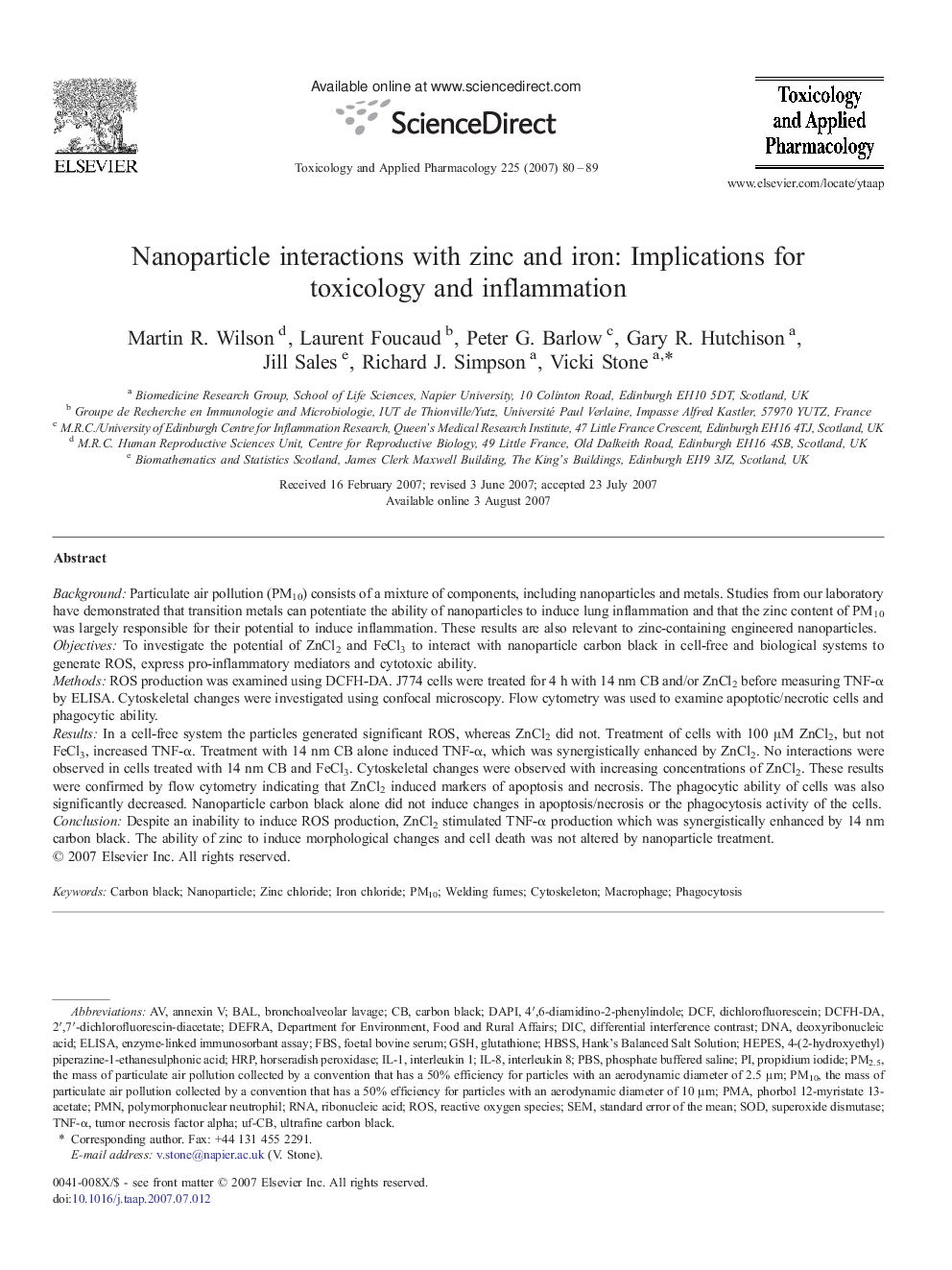| کد مقاله | کد نشریه | سال انتشار | مقاله انگلیسی | نسخه تمام متن |
|---|---|---|---|---|
| 2571478 | 1128635 | 2007 | 10 صفحه PDF | دانلود رایگان |

BackgroundParticulate air pollution (PM10) consists of a mixture of components, including nanoparticles and metals. Studies from our laboratory have demonstrated that transition metals can potentiate the ability of nanoparticles to induce lung inflammation and that the zinc content of PM10 was largely responsible for their potential to induce inflammation. These results are also relevant to zinc-containing engineered nanoparticles.ObjectivesTo investigate the potential of ZnCl2 and FeCl3 to interact with nanoparticle carbon black in cell-free and biological systems to generate ROS, express pro-inflammatory mediators and cytotoxic ability.MethodsROS production was examined using DCFH-DA. J774 cells were treated for 4 h with 14 nm CB and/or ZnCl2 before measuring TNF-α by ELISA. Cytoskeletal changes were investigated using confocal microscopy. Flow cytometry was used to examine apoptotic/necrotic cells and phagocytic ability.ResultsIn a cell-free system the particles generated significant ROS, whereas ZnCl2 did not. Treatment of cells with 100 μM ZnCl2, but not FeCl3, increased TNF-α. Treatment with 14 nm CB alone induced TNF-α, which was synergistically enhanced by ZnCl2. No interactions were observed in cells treated with 14 nm CB and FeCl3. Cytoskeletal changes were observed with increasing concentrations of ZnCl2. These results were confirmed by flow cytometry indicating that ZnCl2 induced markers of apoptosis and necrosis. The phagocytic ability of cells was also significantly decreased. Nanoparticle carbon black alone did not induce changes in apoptosis/necrosis or the phagocytosis activity of the cells.ConclusionDespite an inability to induce ROS production, ZnCl2 stimulated TNF-α production which was synergistically enhanced by 14 nm carbon black. The ability of zinc to induce morphological changes and cell death was not altered by nanoparticle treatment.
Journal: Toxicology and Applied Pharmacology - Volume 225, Issue 1, 15 November 2007, Pages 80–89